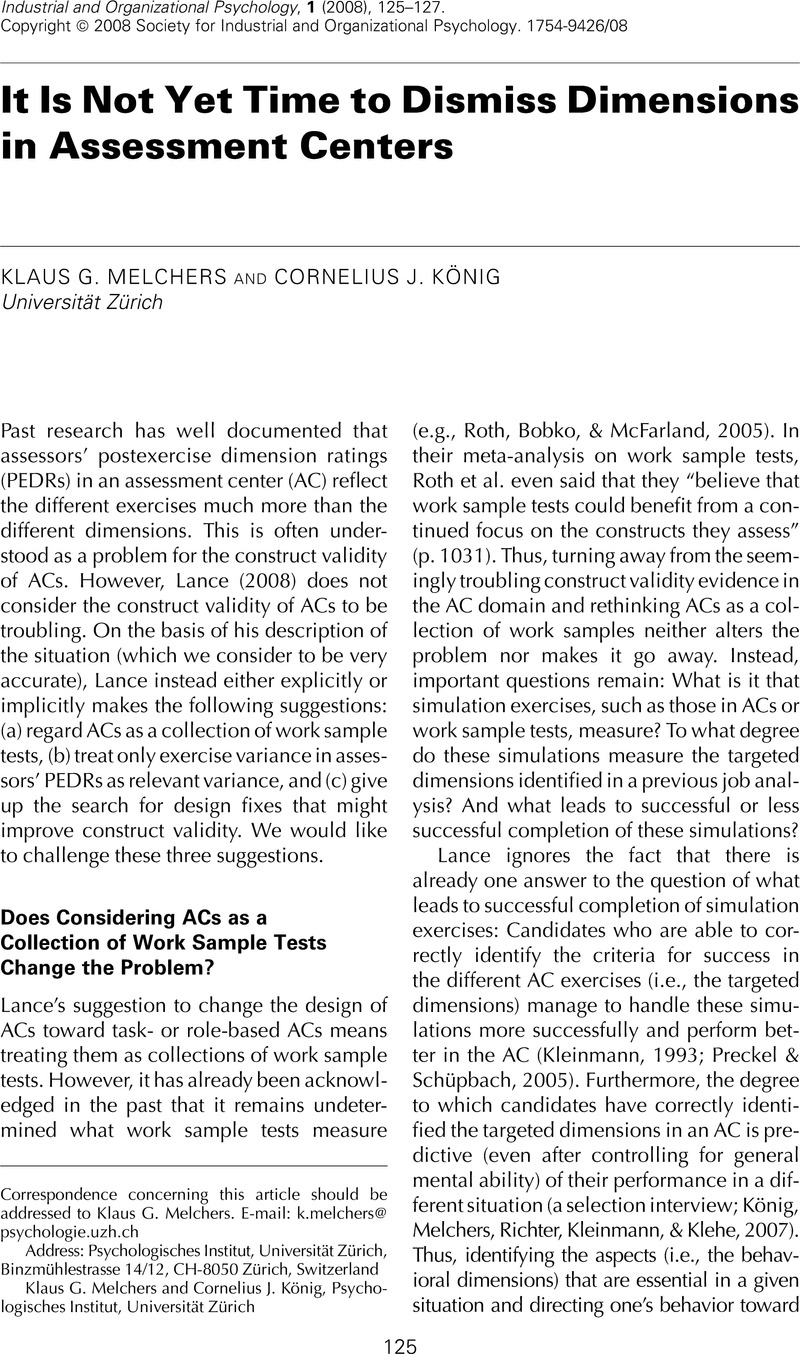Crossref Citations
This article has been cited by the following publications. This list is generated based on data provided by Crossref.
Lance, Charles E.
2008.
Where Have We Been, How Did We Get There, and Where Shall We Go?.
Industrial and Organizational Psychology,
Vol. 1,
Issue. 1,
p.
140.
Jackson, Duncan J. R.
Stillman, Jennifer A.
and
Englert, Paul
2010.
Task‐Based Assessment Centers: Empirical support for a systems model.
International Journal of Selection and Assessment,
Vol. 18,
Issue. 2,
p.
141.
Melchers, Klaus G.
Kleinmann, Martin
and
Prinz, Marion A.
2010.
Do Assessors Have Too Much on their Plates? The Effects of Simultaneously Rating Multiple Assessment Center Candidates on Rating Quality.
International Journal of Selection and Assessment,
Vol. 18,
Issue. 3,
p.
329.
HOFFMAN, BRIAN J.
MELCHERS, KLAUS G.
BLAIR, CARRIE A.
KLEINMANN, MARTIN
and
LADD, ROBERT T.
2011.
EXERCISES AND DIMENSIONS ARE THE CURRENCY OF ASSESSMENT CENTERS.
Personnel Psychology,
Vol. 64,
Issue. 2,
p.
351.
Monahan, Elizabeth L.
Hoffman, Brian J.
Lance, Charles E.
Jackson, Duncan J. R.
and
Foster, Mark R.
2013.
Now You See Them, Now You Do Not: The Influence of Indicator–Factor Ratio on Support for Assessment Center Dimensions.
Personnel Psychology,
Vol. 66,
Issue. 4,
p.
1009.
Wirz, Andreja
Melchers, Klaus G.
Schultheiss, Stefan
and
Kleinmann, Martin
2014.
Are Improvements in Assessment Center Construct-Related Validity Paralleled by Improvements in Criterion-Related Validity?.
Journal of Personnel Psychology,
Vol. 13,
Issue. 4,
p.
184.
Dries, Christian
and
Dicke, Jacqueline
2015.
Executive Assessment.
p.
265.
Guttschick, Kai
and
Dries, Christian
2020.
Digitalisierung der Management-Diagnostik.
p.
97.
Dewberry, Chris
2024.
Assessment centers do not measure competencies: Why this is now beyond reasonable doubt.
Industrial and Organizational Psychology,
Vol. 17,
Issue. 2,
p.
154.



